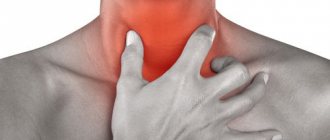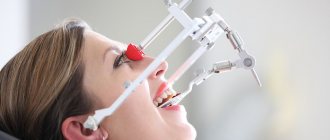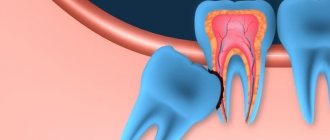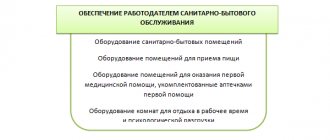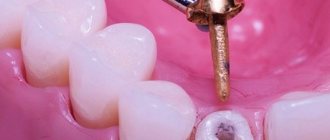Ear pain is a fairly common symptom. Painful sensations in this case give the patient a lot of unpleasant moments, and it is very difficult to simply “endure” such pain. It is noteworthy that pain in the ear is not always associated with diseases of the hearing organ. Such painful sensations can also be caused by other organs that radiate, that is, “giving off,” to the ear. A condition in which the ear hurts, but there is no inflammation in it, is called otalgia.
Otalgia can be caused by many reasons:
Temporal arteritis
The disease is an inflammation of the vessels of the temporal artery.
If the inflammatory process spreads to the ear artery, the patient will also experience pain in the ears. This disease is typical for older women. It causes blurred vision, headaches, pain in the temples, and increased fatigue. Make an appointment right now! Call us by phone or use the feedback form
Sign up
Along the branches of the vagus nerve, pain can radiate to the ear from the esophagus, thyroid gland, and organs of the cardiovascular system.
If you have ear pain, you should definitely consult with an otolaryngologist, since this condition may signal the presence of serious diseases in the body. If the ear is healthy, no abnormalities have been identified, and the pain does not go away, it is necessary to diagnose the nose, larynx, pharynx and, if necessary, other organs to identify the cause of otalgia. Further treatment will depend on the diagnosis.
Why does my cheekbone hurt?
Traumatic injuries
The most common injury to the zygomatic region is bruise.
Occurs in fights, less often when falling or hitting a hard surface (for example, a door frame). The pain is moderate and subsides quickly. Local swelling and hyperemia are observed, abrasions are possible. Opening the mouth is not difficult, speech is not changed. All symptoms disappear within a few days or 1-2 weeks. When the zygomatic bone is fractured, the pain is very sharp and intense. Bruising is detected, swelling quickly spreads to the adjacent parts of the face. There is pain when trying to open the mouth, numbness of part of the cheek, wing of the nose and upper lip, and sometimes diplopia. If the integrity of the maxillary sinus is violated, nosebleeds develop and subcutaneous emphysema is possible. When fragments are displaced, a step is felt in the cheekbone area.
The zygomatic bone participates in the formation of the orbital wall. If the bone wall of the orbit is damaged, along with the symptoms listed above, limited mobility of the eyeball, visual impairment, subcutaneous emphysema, exophthalmos or endophthalmos are detected. Orbital injuries can also be accompanied by double vision, strabismus, and in severe cases, blindness.
Osteomyelitis
Severe tugging, throbbing pain in the cheekbone may be a consequence of post-traumatic osteomyelitis. The disease develops after an open fracture, surgery on the zygomatic bone and nearby tissues. The wound becomes swollen, its edges turn red. Suppuration, intoxication, and general hyperthermia are observed. After opening the abscess, pain and inflammation subside, and a fistula tract forms in the wound area.
Neuralgia
Burning, shooting pain in the cheekbone, reminiscent of an electrical discharge, is characteristic of damage to the second branch of the trigeminal nerve. Pain sensations spread from the side of the face to the center, affecting the upper part of the cheek, upper jaw, upper lip, and nasal mucosa. Attacks of neuralgia last up to 2 minutes and are repeated several times, causing patients to freeze in place.
In patients with ganglionitis of the pterygopalatine ganglion, intense prosopalgia predominates in the area of the cheekbone, eye, hard palate and base of the nose, but the symptom is never clearly localized, since a large number of nerve branches causes the spread of pain to adjacent parts of the face, gums, teeth, and sometimes the back of the head, neck , temple and ear. A distinctive feature of the pathology is pronounced autonomic symptoms: lacrimation, hypersalivation, hyperemia and swelling of half the face.
Sometimes the cause of radiating pain in the cheekbone is ganglionitis of the geniculate ganglion, although for this variant of ganglioneuritis pain in the ear with irradiation to the back of the head, face and neck is more typical. Painful sensations are paroxysmal in nature, and in some patients they are combined with neuritis of the facial nerve.
Cheekbone pain
Muscle damage
In patients with bruxism, bilateral aching pain in the cheekbones is caused by overstrain of the masticatory muscles during repeated nightly episodes of teeth grinding. Drowsiness, headache, toothache, and soreness in the jaw area are possible. Chips, cracks, hyperesthesia and pathological abrasion of teeth are often observed. With myofascial syndrome, pain increases gradually and is a consequence of constant muscle tension when clenching the jaw against the background of overload, stressful situations, and neurotic disorders.
Dental pathologies
Irradiation into the cheekbone is observed when the upper premolars and molars are affected on the corresponding side. In some cases, the pain in the cheekbone is so pronounced that it prevails over the pain in the teeth. The symptom can be observed after tooth extraction, with alveolitis, pulpitis, periodontitis. With deep caries, it does not occur spontaneously and is associated with food entering the carious cavity.
Otolaryngological diseases
The maxillary sinus is located in the body of the maxillary bone. Its wall borders the zygomatic bone, which causes pain to spread to the cheekbone when this sinus is affected. The symptom appears in the following diseases:
- Acute sinusitis.
There are bursting pains in the projection of the sinus, cheekbone, root of the nose and forehead, which intensify when palpated. Intoxication syndrome, fever, and nasal congestion are detected. - Aerosinusitis.
A similar localization of pain is observed with aerosinusitis (if the maxillary sinus is affected), but hyperthermia and intoxication occur only with secondary infection. - Acute pansinusitis.
A clear clinical picture is characteristic. Chills, febrile temperature, and severe intoxication occur. The general condition is serious. Pain from the cheek and cheekbone spreads to the eyebrows, orbits, crown and back of the head, sometimes extends to the lower jaw, is combined with a constant diffuse headache, and with a prolonged course is supplemented by progressive neurological disorders (insomnia, weakness, paresthesia).
In addition, acute bursting pain in the cheekbone is typical of one of the orbital complications of sinusitis - orbital osteoperiostitis. The spread of the inflammatory process to the lower outer wall of the orbit causes the involvement of the zygomatic bone. Along with the symptoms of sinusitis, significant swelling of the periorbital tissue, exophthalmos, displacement and limitation of eye mobility are detected.
Other reasons
Headaches with possible irradiation to the cheekbone are observed in diseases with a completely unclear etiology - cluster headaches and paroxysmal hemicrania. Sometimes the epicenter of pain in the cheekbone with spread to other areas is noted with atypical facial pain. Pain syndrome of psychogenic origin against the background of stress or overwork is formed in emotionally unstable, suspicious people. In some cases, the symptom is found in patients with hypochondria and occurs in delusional and hallucinatory disorders.
If the cause of pain is an inflammatory process of the ENT organs
If your ear and jaw hurt, you may also have a sore throat
Sinusitis
Pain in the ear and jaw often bothers a person who has inflammation of the maxillary sinuses. The pain has a right-sided or left-sided localization.
The areas that become painful are:
- upper jaw;
- ear;
- eye;
- the area where the sinus is located, away from the nose.
Patients often suffer from headaches. Unpleasant sensations increase significantly at night and when the body is tilted.
Important: inflammation of the sinuses is very dangerous due to its complications due to their close location to the brain.
If a person suspects he has sinusitis, he should immediately consult a doctor and begin treatment.
Tonsillitis
Inflammation of the pharyngeal tonsils causes severe pain in the throat, which can spread to the lower jaw and ear. Such severe pain prevents a person from eating, drinking, or talking. The temperature rises, the symptoms of intoxication of the body increase. Inflammation from the tonsils spreads to surrounding tissues.
Otitis
With inflammation of the outer and middle parts of the ear, there will be a sensation that the jaw under the ear hurts. In case of inflammatory processes of the outer ear, there may be a lump in the area around the auricle or the lump will be located directly on the auricle.
If inflammation of the middle ear has developed, the pain will be stronger. It spreads to nearby tissues, the jaw, teeth, eyes. The pain feels sharp and shooting. The body temperature increases, the patient looks lethargic and broken.
Important: inflammatory processes in the ear must be treated by a doctor; in the event of complications, inflammation may spread to the inner part of the ear, which can cause hearing problems.
What to do if both jaw and ear hurt at the same time
When acute pain occurs from the jaw joint to the ear, it is worth reducing the impact on the affected area.
Following these simple recommendations will help with this:
- try not to open your mouth wide, thus reducing the load on the joint;
- It is worth eating food in small portions, and it should not be very hot or very cold;
- The food consumed should not be difficult to chew, preferably soft; if the pain syndrome is severe, the food is preferably liquid;
- avoid pressure and mechanical impact on the painful area;
- exclude the possibility of hypothermia.
These precautions can reduce the number and force of chewing movements and reduce the load on the jaws.
Instructions on how to help yourself or a loved one while waiting for a doctor’s appointment:
| Main complaints | What to do to alleviate the condition |
| Chewing pain, stiffness, clicking or catching of the jaw | take a pain reliever; reduce or eliminate the load on the jaw. |
| Pain syndrome in the jaw and ear | Taking a pain reliever |
| Edema and swelling of the temporomandibular joint | Short-term use of cold |
| Dental pain | taking painkillers; rinsing with antiseptic drugs; herbal rinses with an antiseptic and soothing effect. |
| A significant increase in body temperature, the appearance of symptoms of viral mumps in the child | use of antipyretic drugs; fastest house call. |
Prolonged pain that does not go away is a reason for examination
If you simultaneously complain that your jaw and ear hurt, you need to see a doctor as soon as possible. A dentist or ENT doctor is suitable for the initial visit; they will help differentiate the cause of the pain and, if necessary, refer you to other specialists.
Every person knows himself better than any doctor. Therefore, when the first signs of illness appear, you can roughly guess what may be causing your poor health.
Ear diseases in adults
Painful sensations can occur due to direct pathologies of the ear. These include: otitis media, eustachitis, tumors.
Otitis is an infectious inflammation of the ear, the leader among diseases of the ENT organs in terms of the number of visits to an otolaryngologist. The causes of the disease are untreated infectious diseases of the upper respiratory tract (tonsillitis, pharyngitis, laryngitis, sinusitis), rhinitis, a deformed nasal septum, damage to the auricle, penetration of water into it or infections after self-cleaning the ear with foreign objects.
The human hearing organ consists of the outer, middle, and inner ear. Accordingly, external, middle and internal otitis are distinguished.
Otitis externa covers the ear canal. Basically, the disease develops when water penetrates into it while swimming. There is even the term “swimmer’s ear”: otitis media occurs with frequent contact with water. For treatment of ear pain caused by otitis externa, you should contact an otolaryngologist.
Friends! Timely and correct treatment will ensure you a speedy recovery!
Otitis media: a third of all visits to an otolaryngologist are associated with this type of otitis. The main complaint of patients is shooting pain in the middle ear. The disease can occur in several forms: acute, exudative and chronic purulent.
Internal otitis (labyrinthitis) is an inflammatory disease of the inner ear. The disease is severe and occurs infrequently: usually as a complication of otitis media or a severe form of another infectious disease (for example, tuberculosis).
If you suspect inflammation, you should not self-medicate: incorrectly prescribed treatment for otitis media or an undertreated condition can cause serious complications. Only an otolaryngologist can provide effective assistance to an adult with otitis media.
Eustachitis is an inflammation of the Eustachian (auditory) tube, which connects the organ of hearing to the nasopharynx. The Eustachian tube is needed to better capture sounds and ventilate the middle ear through the nasopharynx. With the qualified help of an otolaryngologist, treatment of ear pain caused by eustachitis occurs quickly, and relief occurs in a couple of days.
Ear tumors are uncommon. CT and MRI are used to determine pathology.
Diagnostic methods
For headaches that affect the ear area, it is important to undergo a timely examination and determine the cause of the alarming symptoms. At the initial examination, only visible disorders are determined, including inflammatory processes, fever and other signs. However, to get a complete picture, additional examinations will be needed:
- clinical and biochemical blood tests - these data will indicate infectious processes, pathologies of the hematopoietic system, as well as disruption of the functioning of internal organs;
- bacterial culture if purulent inflammation is suspected - will allow you to identify the pathogen and select an antibiotic to which the bacteria are sensitive;
- Dopplerography - ultrasound diagnostics of blood flow in the vessels of the neck and head, prescribed to detect areas of ischemia;
- MRI or CT scan of the head – often used when tumors in the brain are suspected;
- consultations with specialized specialists – dentist, otolaryngologist, neurologist.
The Clinical Brain Institute has precise, high-quality modern equipment, which makes it easy to make the correct diagnosis in a short time. Here you can take blood tests and other biological fluids, and undergo an examination of the brain and cervical spine. Qualified specialists will help you decipher test data and identify any pathologies in the early stages.
Jaw pain near the ear: what causes the discomfort and how to cope with it
Jaw pain is an unpleasant symptom that causes significant discomfort. The problem requires immediate medical attention. When examining and making a diagnosis, he takes into account the location of the problem area. If your jaw hurts near your ear, this may indicate problems with the temporomandibular joint, which provides mobility to the lower jaw and its connection to the skull. Soreness in this area often indicates a number of other diseases. A specialist will help determine the cause.
How to eliminate jaw pain near the ear
Identifying the causative factor allows you to determine how to treat the pathology. Possible actions of the doctor:
- Dental problems require sanitation, which eliminates any sources of infection.
- For bruises, use cold compresses. A dislocation requires a visit to a surgeon who will realign the jaw. For fractures with bone displacement, surgery is performed. The patient is prescribed painkillers and anti-inflammatory external agents.
- In case of an abscess, the abscess is opened and antibiotics are prescribed.
- Oncology involves the use of surgical techniques, radiation and chemotherapy.
- Infectious and inflammatory processes are stopped with the help of antibiotics, compresses, and mouth rinses. Sometimes surgical treatment is required.
Also, depending on the provoking factors, different methods of physiotherapy are used: microwave, UHF, ultraviolet irradiation, diadynamic therapy.
Ear pain in a healthy person
Unpleasant sensations in the organ of hearing can occur in a completely healthy person, and there are many reasons for this (we will look at some in more detail):
- sensitivity to strong wind and cold (Due to a long stay in the wind, a hematoma may form in the ear - it will go away on its own in a few days. No additional measures need to be taken in this situation.);
- water getting into the ear;
- presence of sulfur plug;
- mechanical injuries (if, in addition to pain, bleeding from the ear begins, consult a doctor immediately);
- acoustic injuries (occur due to exposure to loud sounds on the organ of hearing, for example, at a rock concert, in a noisy industry, or during prolonged use of headphones. As a rule, the pain goes away when moving away from the source of noise. If, due to the nature of the work, it is impossible to eliminate the source of noise, You definitely need to use special earplugs.);
- barotrauma (manifested by changes in atmospheric pressure; most often occur during air travel or diving. When your ears are blocked on an airplane, you need to yawn more often, swallow, or simply chew something to eliminate the condition of “stuffiness”);
- foreign body.


